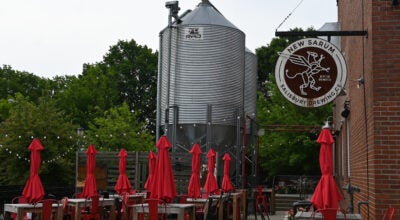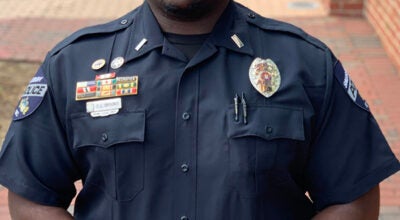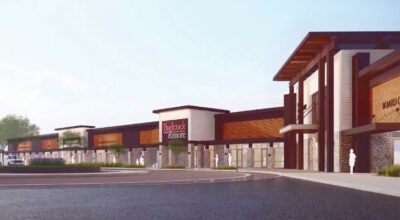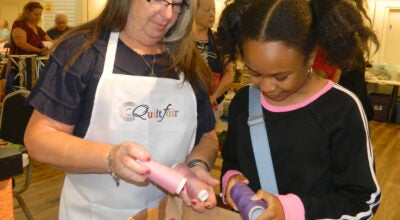Residents speak in final meeting over roundabout
Published 12:00 am Tuesday, December 13, 2011
By Karissa Minn
kminn@salisburypost.com
SALISBURY — State transportation officials say they’re not likely to change their minds about putting in a roundabout at Briggs and Sherrills Ford roads.
Officials with the N.C. Department of Transportation held the final public meeting Monday about the proposed traffic circle.
The Department of Transportation says the roundabout, which would be the first in Rowan County, would make the intersection safer and remove traffic flow.
There have been 22 accidents in the past five years where Briggs Road meets Sherrills Ford Road, said Pat Ivey, Division 9 engineer.
“We believe this roundabout is the right long-term solution for this problem,” Ivey said. “When we look at the experience across the state, across the region and even federal data … it works in both urban and rural settings.”
Neighbors had requested a stoplight, but the transportation department has said the intersection’s traffic volume doesn’t warrant one under federal law. A temporary caution light was put up in March.
“How many accidents have there been since then?” asked John Morrison, chief of the West Rowan Volunteer Fire Department.
“One,” Ivey replied.
“It sounds like it’s working pretty good, then,” Morrison said, noting that the average had been four accidents per year.
A few other residents asked if the department could just keep the flashing light there and see if that solves the problem.
Ivey said the improvement is likely temporary, and if the state waits too long, the federal money to help it fund the roundabout will be gone.
“We want to make sure this is a long-term solution, not a short-term fix,” Ivey said.
A few participants, like Rowan County Commissioner Jim Sides, suggested adding rumble strips and signs to alert people that they need to slow down.
“This is such a radical departure from anything we’ve seen,” Sides said, stressing the project’s $450,000 cost.
Couch said rumble strips are used to alert drivers of an action they need to take. That wouldn’t work for the drivers who don’t have to stop, and Ivey said it wouldn’t help the drivers who do.
“People are stopping — they see the stop signs — but they’re pulling out in front of other people,” he said.
Some have suggested a four-way stop, he said, but they can aggravate motorists in the wrong location. A roundabout keeps traffic flowing.
N.C. Rep. Harry Warren, who helped organize the meeting, asked if a traffic circle is the best way to solve accidents caused by poor driving.
“This would definitely slow traffic down and cause people to have to acknowledge the intersection,” Warren said. “But you’re looking at a $450,000 solution versus a $10,000 to $12,000 solution.”
According to state studies, Ivey said, roundabouts reduced accidents by 41 percent for unsignalized intersections and 76 percent for signalized intersections.
No roundabout that Ivey’s division has installed has caused an increase in accidents, he said. Sometimes they cause congestion, but in the right locations, they work smoothly.
The speed limit is 55 miles per hour at the intersection now, but it would be lowered to 20 for the roundabout.
The department held a public workshop about the project on Oct. 25, and it agreed to hold another one Tuesday at Warren’s request.
When an audience member asked if the roundabout is a “done deal,” Ivey replied that it’s not, but transportation officials haven’t heard anything to make them change their minds.
“We made this decision based on engineering judgments, not popular opinion,” Ivey said, “because that has nothing to do with whether it will actually work or not.”
But the transportation department has changed the design based on public input, he said.
It increased the number of street lights approaching the intersection, widened the travel lane for trucks and shifted the traffic circle further from a local restaurant.
Ivey said Graham’s Grill would still lose two or three parking spaces, but it would keep more of its parking lot and the entrances on both roads.
“This is one of the things we could not avoid,” Ivey said. “We tried to do everything we can to shift it to get out of the way.”
James Summitt also owns property at the corner of Sherrills Ford Road and Briggs Road, and he said he doesn’t like the roundabout proposal.
“I go through this thing 15 to 20 times a day,” Summitt said after the meeting, “and I’ve never even come close to having an accident there.”
But Summitt said he does hear tires squealing at the intersection, and he has even seen cars pass each other while going through it.
“This is just going to be a big inconvenience, but there needs to be something to slow traffic down,” he said. “They ought to make it 45 miles per hour for a mile each way — and enforce it.”
One participant, Garland Briggs, agreed that the speed limit should be lowered and said the roundabout is a “huge waste of money.”
“If you put a 45 mile-per-hour speed limit out there, you could eliminate all of (the severe wrecks),” Briggs said during the meeting.
J.P. Couch, Division 9 traffic engineer, said it’s hard to enforce a lowered speed limit if it’s unrealistic.
Several people at Monday’s meeting, like fire chief Morrison, asked why the department isn’t prioritizing other dangerous intersections, roads and bridges over this one.
“I’m not against your roundabout … but I see needs in other places that we’re not spending money,” he said.
Officials answered that they are looking at safety improvements at Old Beatty Ford Road and the intersection of Woodleaf, West Ridge and Enon Church roads.
Contact reporter Karissa Minn at 704-797-4222.
Twitter: twitter.com/postcopolitics
Facebook: facebook.com/ Karissa.SalisburyPost





